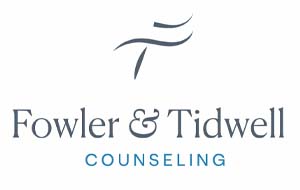Understanding Anorexia and Bulimia in a World Obsessed with Perfection

In a world where social media filters and airbrushed magazine covers define beauty, the pressure to achieve a “perfect” body is everywhere. From Hollywood celebrities to influencers on TikTok, we’re constantly bombarded with images of unattainable beauty standards. But behind the curated feeds and flawless selfies, many people are silently battling eating disorders, particularly anorexia and bulimia. These are not just about food or weight—they’re complex mental health issues that can affect anyone, regardless of age, gender, or background.
Eating Disorder Awareness is about more than statistics or facts; it’s about understanding the emotional and psychological struggles behind the behaviors. It’s about breaking the stigma and encouraging open conversations so that those suffering feel less isolated. If you or someone you love is struggling with anorexia or bulimia, know that help is available, and healing is possible.
What Are Anorexia and Bulimia?
Anorexia nervosa and bulimia nervosa are two of the most common eating disorders, but they manifest in different ways. Anorexia is characterized by extreme food restriction, an intense fear of gaining weight, and a distorted body image. People with anorexia often see themselves as overweight even when they are dangerously underweight. This disorder isn’t just about dieting or wanting to be thin—it’s about control, fear, and deep-rooted anxiety.
On the other hand, bulimia involves a cycle of binge eating followed by purging, which can include vomiting, excessive exercise, or the misuse of laxatives. People with bulimia often feel trapped in a cycle of shame and guilt, using purging as a way to regain a sense of control. Unlike anorexia, individuals with bulimia may maintain a normal weight, making it more difficult to recognize.
Both disorders have serious physical and psychological consequences, including malnutrition, heart problems, digestive issues, and mental health struggles such as depression and anxiety.
The Impact of Pop Culture: Unrealistic Beauty Standards
If you’ve ever scrolled through Instagram or watched a reality TV show, you’ve likely seen the impact of unrealistic beauty standards. The pressure to look a certain way isn’t new—think back to the 90s and early 2000s when ultra-thin models like Kate Moss defined beauty with the “heroin chic” look. Fast forward to today, and the narrative hasn’t changed much, except now, it’s amplified through social media.
The rise of platforms like TikTok and Instagram means that people are constantly exposed to curated images of seemingly perfect bodies. Celebrities like the Kardashians have popularized certain body types, leading to trends like the “slim thick” look—tiny waists paired with curves in all the “right” places. But what’s often left out of the conversation are the filters, photo editing, and cosmetic procedures that contribute to these images.
In recent years, pop culture has started to shift, with more influencers and celebrities speaking out about body positivity and self-acceptance. Stars like Demi Lovato and Taylor Swift have publicly discussed their struggles with eating disorders, helping to break the stigma and encourage open conversations. However, the pressure to conform to beauty ideals is still prevalent, contributing to the rise of anorexia and bulimia among young people.
Recognizing the Signs: What to Look For
Eating disorders are often hidden behind secrecy and shame. People struggling with anorexia or bulimia may go to great lengths to conceal their behaviors. However, recognizing the signs can be the first step toward getting help.
Common signs of anorexia include:
- Extreme weight loss or being significantly underweight for one’s age and height.
- Obsessive focus on food, calories, and dieting.
- Refusal to eat certain foods or food groups.
- Excessive exercise, even when tired or injured.
- Withdrawal from social activities, particularly those involving food.
Signs of bulimia may include:
- Eating unusually large amounts of food in one sitting (binge eating).
- Frequent trips to the bathroom after meals.
- Signs of purging, such as using laxatives or diuretics.
- Dental issues like tooth decay from vomiting.
- Fluctuations in weight or maintaining an average weight despite extreme eating habits.
If you notice these signs in yourself or someone you love, it’s crucial to reach out for help. Eating disorders are serious mental health conditions that require professional support.
The Role of Therapy: Breaking the Cycle of Shame and Secrecy
Anorexia and bulimia are not just about food—they’re about underlying emotional issues like anxiety, depression, and low self-esteem. Therapy plays a crucial role in treating eating disorders by addressing the root causes and helping individuals develop healthier coping mechanisms.
Cognitive Behavioral Therapy (CBT) is one of the most effective approaches, helping individuals identify and challenge distorted thought patterns. For example, someone with anorexia may believe that their self-worth is tied to their weight. CBT helps them recognize this pattern and replace it with healthier, more realistic beliefs.
Family-Based Therapy (FBT) can also be beneficial, especially for younger individuals. In FBT, family members are involved in the recovery process, learning how to support their loved one while promoting healthy eating habits.
The journey to recovery is not linear, and setbacks are part of the process. However, with the right support system—therapists, nutritionists, and supportive friends and family—healing is possible.
Seeking Help in Houston: You’re Not Alone
Houston is home to a variety of resources for those struggling with eating disorders, including specialized therapists, support groups, and treatment centers. If you’re feeling overwhelmed or unsure where to start, reaching out to a mental health professional is the first step. Remember, seeking help isn’t a sign of weakness—it’s a step toward reclaiming your life.
As a therapist in Houston, I understand the challenges of living in a world that constantly pressures us to look a certain way. If you’re struggling with anorexia, bulimia, or self-esteem issues related to body image, know that you don’t have to face it alone. Together, we can work on building a healthier relationship with food, body image, and most importantly, yourself.
Final Thoughts: Breaking the Silence, Breaking the Stigma
Anorexia and bulimia thrive in secrecy, fueled by shame and misunderstanding. But the more we talk about these issues, the more we can break the stigma. By raising awareness, we can create a culture that values mental health over appearances, self-worth over perfection, and compassion over judgment.
If you or someone you know is struggling with an eating disorder, reach out for help. Whether through therapy, support groups, or simply having an honest conversation, taking that first step can be life-changing.
Written by Antonio Wilson, LPC Associate, Supervised by Jenai Tidwell, LPC Supervisor
Schedule an appointment with Antonio here!

